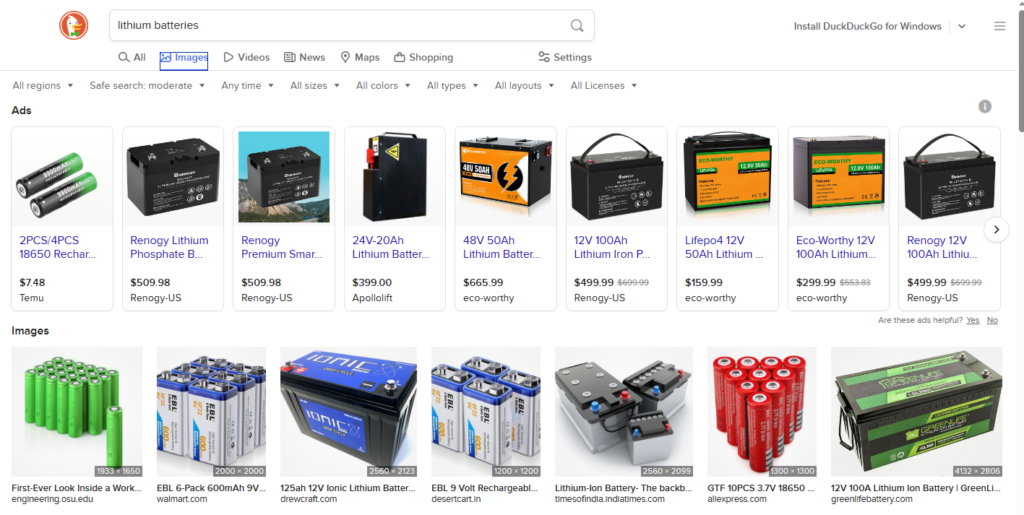Battery Selection Considerations for Mechatronics Project

Mechatronics is the interdisciplinary field that combines mechanical, electrical, and computer engineering to design and control complex systems. Mechatronics applications can range from robots and drones to smart appliances and wearable devices. One of the key components of any mechatronics system is the battery, which provides the power source for the system’s operation. However, not all batteries are created equal, and choosing the right one for a specific mechatronics application can be a challenging task. In this blog post, we will discuss some of the main considerations when selecting a battery for mechatronics application, such as:
- Battery capacity: This is the amount of energy that a battery can store and deliver, measured in watt-hours (Wh) or milliampere-hours (mAh). The higher the capacity, the longer the battery can power the system. However, higher capacity also means larger size, heavier weight, and higher cost. Therefore, it is important to balance the capacity with the system’s energy requirements and design constraints.
- Battery voltage: This is the electric potential difference between the positive and negative terminals of a battery, measured in volts (V). The voltage determines how much power a battery can provide to the system. However, different mechatronics components may require different voltage levels to operate properly. Therefore, it is important to match the battery voltage with the system’s voltage requirements and use appropriate converters or regulators if needed.
- Battery chemistry: This is the type of material that a battery uses to store and release energy through chemical reactions. There are many types of battery chemistry, such as lead-acid, nickel-cadmium, nickel-metal hydride, lithium-ion, lithium-polymer, and more. Each type has its own advantages and disadvantages in terms of performance, safety, lifespan, environmental impact, and cost. Therefore, it is important to compare and contrast different battery chemistries and choose the one that best suits the system’s needs and constraints.
- Battery management: This is the process of monitoring and controlling the battery’s state of charge, state of health, temperature, current, voltage, and other parameters to ensure optimal performance and safety. Battery management can be done by using dedicated hardware or software components, such as battery management systems (BMS), chargers, balancers, protectors, indicators, and more. Battery management can help extend the battery’s lifespan, prevent overcharging or overdischarging, avoid thermal runaway or fire hazards, and improve the system’s reliability and efficiency.
These are some of the main considerations when selecting a battery for mechatronics application. However, there may be other factors that are specific to each system or application that need to be taken into account as well. Therefore, it is advisable to consult with experts or do thorough research before making a final decision on which battery to use for your mechatronics project.
Lithium Chemistry Options
Lithium batteries are one of the most popular types of battery chemistry for mechatronics applications, due to their high energy density, low self-discharge rate, long lifespan, and light weight. However, not all lithium batteries are the same, and there are different options when it comes to choosing the right one for your mechatronics project. We will discuss some of the main options when it comes to lithium batteries, such as:
- Lithium-ion (Li-ion): This is the most common type of lithium battery, which uses a liquid electrolyte and intercalated lithium compounds as electrodes. Li-ion batteries have a high power output, a wide operating temperature range, and a good cycle life. However, they also have some drawbacks, such as the risk of thermal runaway or explosion if damaged or overcharged, the need for a battery management system to prevent overcharging or overdischarging, and the relatively high cost.
- Lithium-polymer (LiPo): This is a variant of Li-ion battery, which uses a solid or gel-like electrolyte and thin polymer electrodes. LiPo batteries have a higher energy density, a lower internal resistance, and a more flexible shape than Li-ion batteries. However, they also have some disadvantages, such as the higher sensitivity to temperature and mechanical stress, the shorter shelf life, and the higher cost.
- Lithium-iron-phosphate (LiFePO4): This is another variant of Li-ion battery, which uses iron phosphate as the cathode material. LiFePO4 batteries have a lower energy density, but a higher power density, a longer cycle life, and a higher safety than Li-ion batteries. They also have a lower self-discharge rate, a wider operating voltage range, and a lower environmental impact than Li-ion batteries. However, they also have some drawbacks, such as the lower nominal voltage, the higher weight, and the higher cost.
- Lithium-sulfur (Li-S): This is an emerging type of lithium battery, which uses sulfur as the cathode material and lithium metal as the anode material. Li-S batteries have a very high theoretical energy density, up to 10 times higher than Li-ion batteries. They also have a low cost and a low environmental impact. However, they also have some challenges, such as the low cycle life, the low power output, the poor low-temperature performance, and the technical difficulties in manufacturing and scaling.
These are some of the main options when it comes to lithium batteries for mechatronics applications. However, there may be other types or subtypes of lithium batteries that are suitable for specific systems or applications. Therefore, it is advisable to consult with experts or do thorough research before making a final decision on which lithium battery to use for your mechatronics project.
